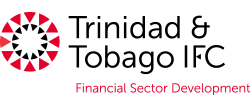Digitisation vs. Digitalisation: The Building Blocks of Digital Transformation
By TTIFC Staff Writer
Over time, the terms digitisation and digitalisation have become increasingly common as more governments are working to digitally transform their economies. Although both concepts are often used interchangeably, there are distinct differences between the two and thus should not be used as synonyms. Some may say that understanding the differences between digitisation and digitalisation are like splitting strands of hair. Nonetheless, it is important to acknowledge the role of each concept in improving business processes, service delivery to citizens, and enabling digital transformation within any economy.
The difference in definitions
The key difference between digitisation and digitalisation is highlighted in their definitions. Digitisation is “the process of converting analog or paper-based data and information into a digital format without any change in the business process.” (SAP, 2020). On the other hand, digitalisation occurs “when data from throughout the organisation and its assets are processed through advanced digital technologies, which leads to fundamental changes in business processes and models.” (SAP, 2020). Herein lies the main difference; data and information are digitised while business processes are digitalised (Forbes, 2018). Notably, for digitalisation to occur, digitisation must already exist, while digitisation does not require any form of digitalisation. Essentially, both concepts are positively related and are required for digital transformation.
The building blocks of digital transformation
- Digitisation is the foundation from which digitalisation can be implemented. As stated in its definition, digitisation is evidenced by converting a paper-based form into a digital format, for example, the conversion of paper-based information into a google form or an excel spreadsheet. Within recent years, Governments have devoted more resources to digitise past information and the way it captures new data for its public services. In Trinidad and Tobago, for example, citizens can use Ministry websites and portals to sign up for their BIR number, driver’s permit renewals and file their taxes. As more data and information becomes digitised throughout government, digital technologies can be embedded to change front-end processes where electronic forms are integrated, and back-end processes where data can be stored and linked to other transactions.
- Digitalisation seeks to leverage digital technologies to make better use of digitised data and information. These digital technologies include, inter alia, cloud technologies, artificial intelligence, machine learning, Internet of Things networks (IoT) and advanced analytics (big data). The acquisition of such digital technologies is necessary for digitalisation but is not an end in itself. For digitalisation to successfully occur within sectors of the economy, there must be greater interdependence and collaboration among Ministries, Departments and Agencies (MDAs) within the government. For example, in Trinidad and Tobago, TTconnect is an example of an integrative model for government service delivery which comprises of six channels including its online government portal. This exemplifies the country’s ongoing shift towards digitalisation as the platform offers access to various government services. By embedding more digital technologies into TTconnect’s integrated system, the country will experience the benefits of government MDAs undertaking digitalisation Digitalisation also requires a redesign of value chains within organisations to transform the ways of doing business throughout the public sector with the use of digital technologies (Jurčević et al., 2019). The Ministry of Works and Transport, as an example, is leveraging digital technologies such as traffic cameras to monitor traffic offences in real-time. An offender’s data is accessed through vehicle registration and licensing data systems to issue tickets and fines. This form of digitalisation will assist the ministry in efficiently executing their responsibilities and demonstrates the benefits and usage of integrated data. As evidenced by these examples, digitalisation bridges the gaps between individual processes to establish harmonious business operations through digital technologies.
- Digital Transformation involves the integration of digital technologies and solutions in every area of business or, in the case of government, every area of society. While almost all governments have introduced programmes to digitalise more public sector services, there are a few who have been able to experience digital transformation throughout their economy. Digitally enhanced processes aim to improve customer experiences, delivery value, generate revenue and improve efficiency (SAP, 2021).
The TTIFC’s role in Government Digitalisation
The TTIFC continues to support Government Digitalisation as the State Agency responsible for enabling a cashless society in Trinidad and Tobago. This vision is being accomplished through advancing financial inclusion, accelerating the digitalisation of payments across the public sector and the development of the financial services sector to facilitate the growth of a financial technology (FinTech) Innovation hub. The TTIFC is a resourceful ally to all stakeholders such as the Central Bank, the Treasury, Ministry of Finance and Ministry of Digital Transformation, to ensure that public sector digitalisation within the financial services sector becomes a reality in Trinidad and Tobago.
References
Forbes (2018). Digitization, Digitalization, and Digital Transformation: Confuse Them at Your Peril. Available at: https://www.forbes.com/sites/jasonbloomberg/2018/04/29/digitization-digitalization-and-digital-transformation-confuse-them-at-your-peril/?sh=41be00f12f2c
SAP (2020). Digitization vs Digitalization. Available at: https://insights.sap.com/digitization-vs-digitalization/
SAP (2021). What is Digital Transformation. Available at: https://insights.sap.com/what-is-digital-transformation/
